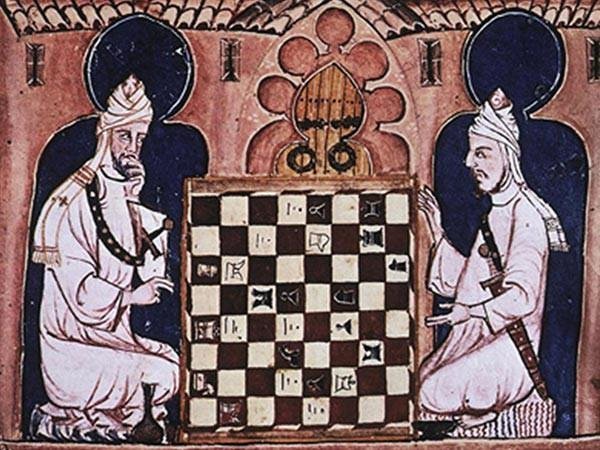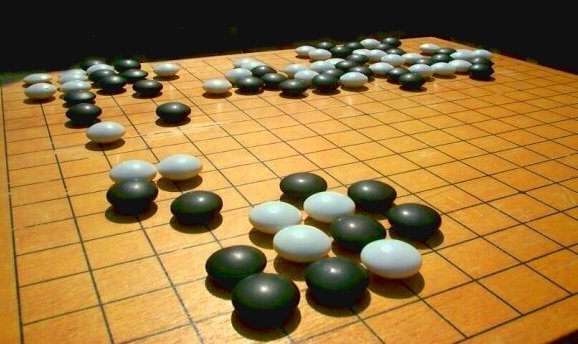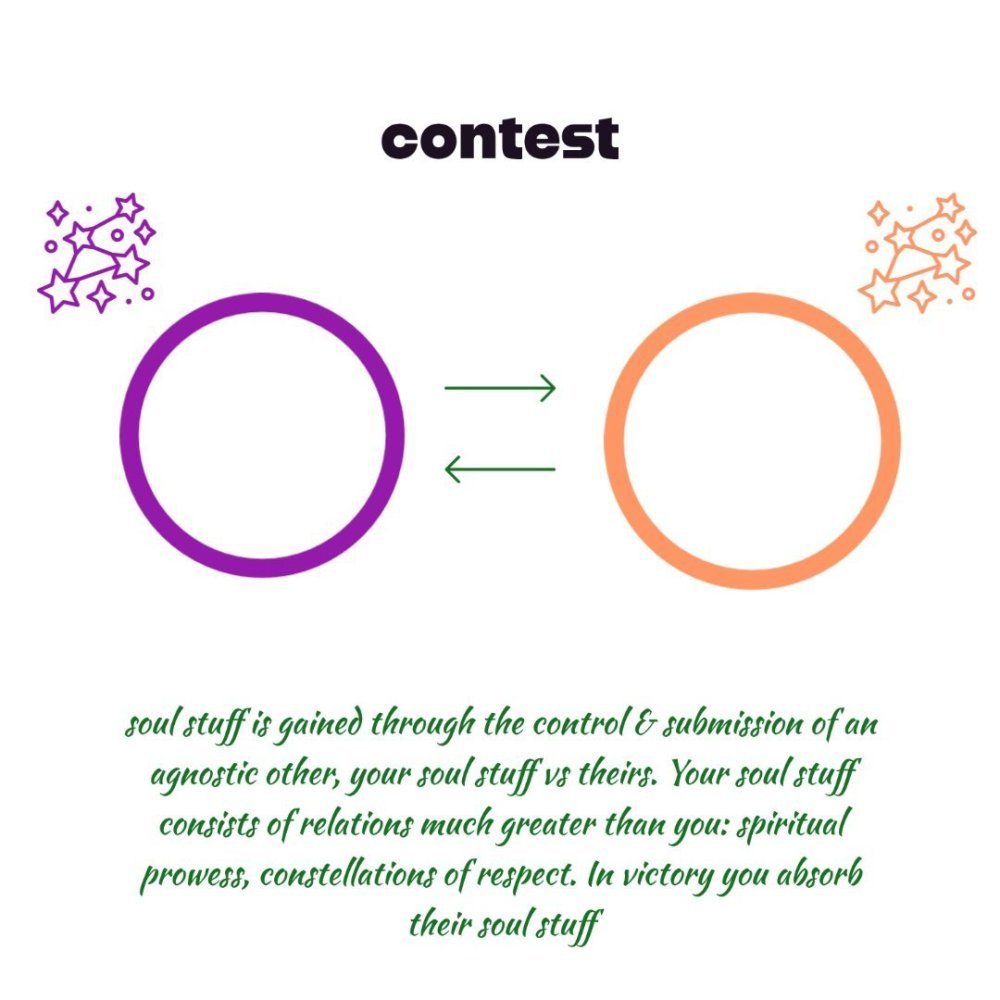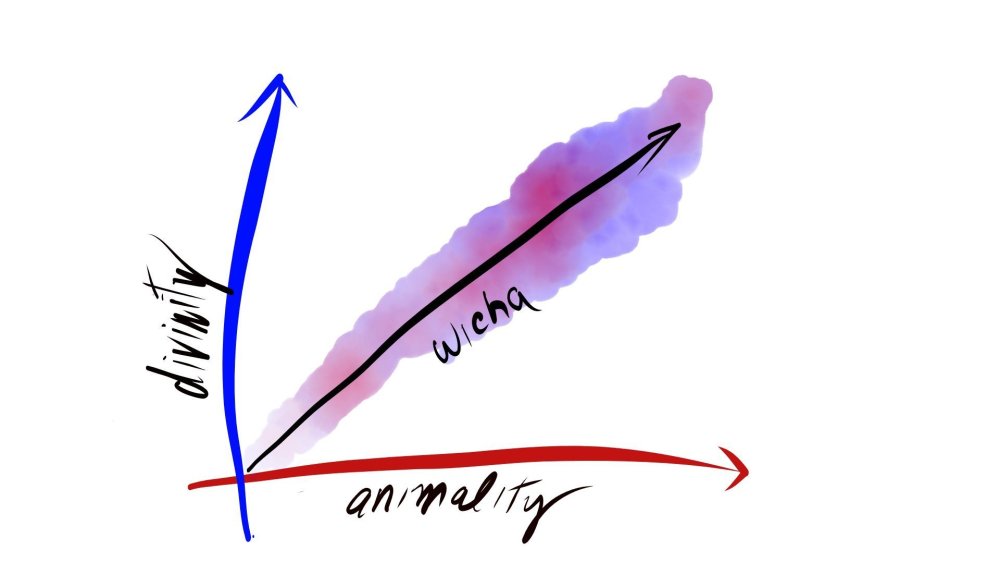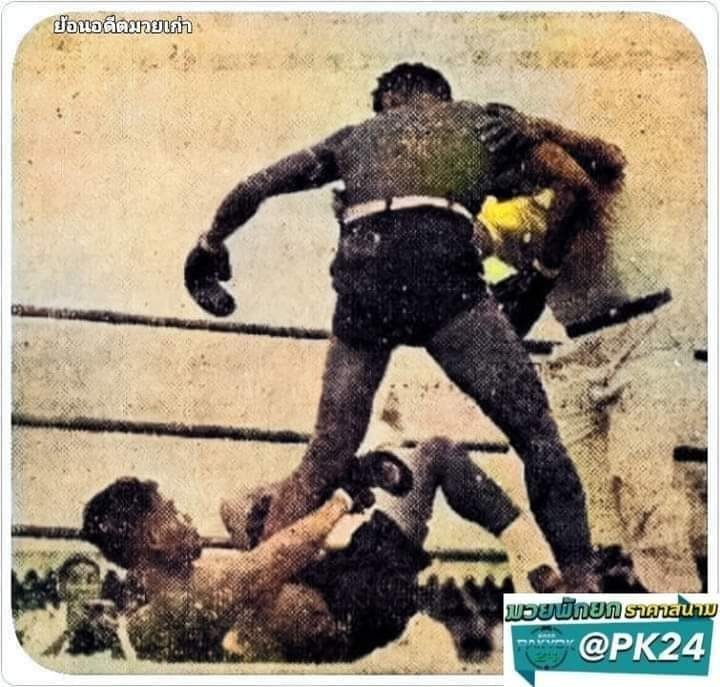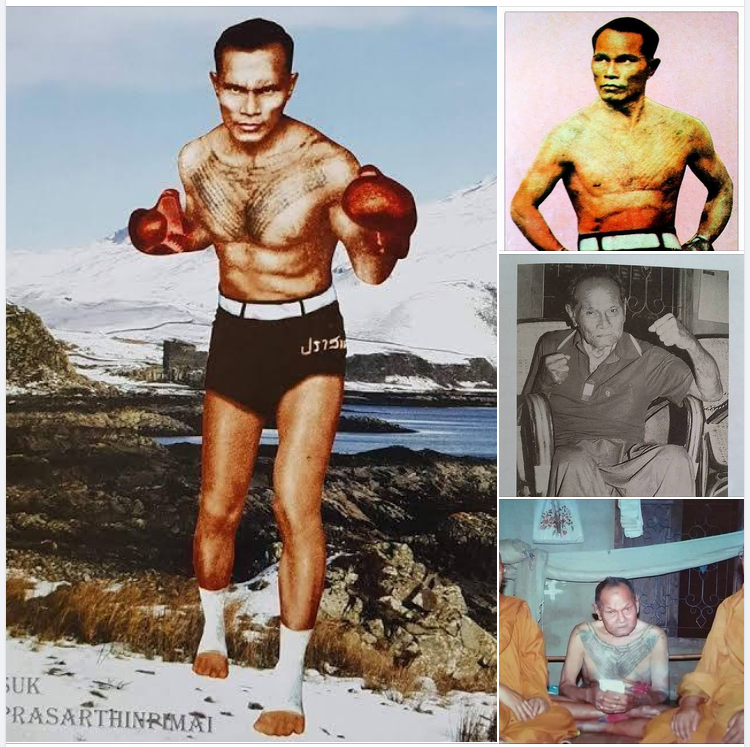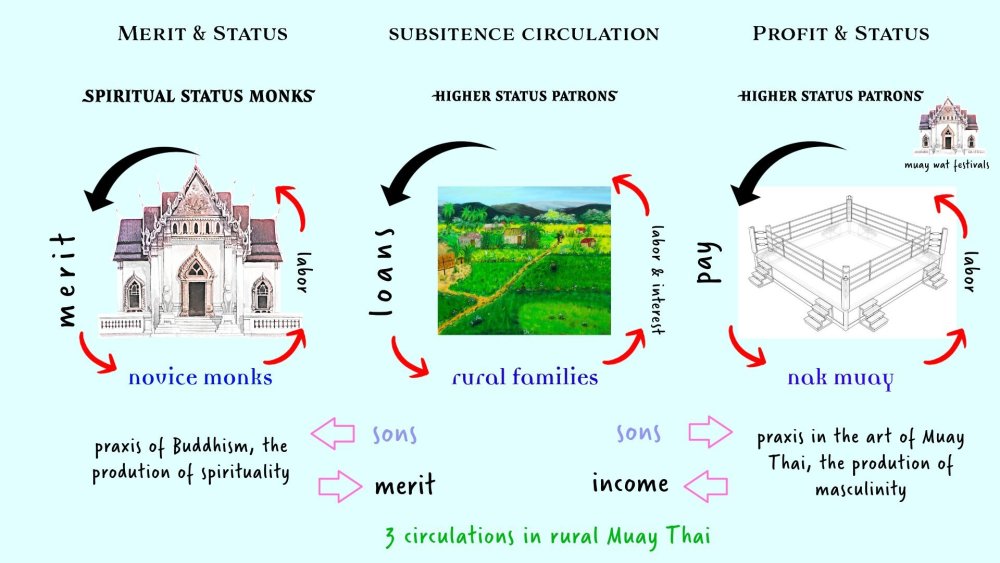-
Posts
2,264 -
Joined
-
Days Won
499
Everything posted by Kevin von Duuglas-Ittu
-
Long has been my thesis that Thailand's Muay Thai developed principally through its vast array of provincial fight networks and the communal wisdom of those gambling markets, which makes of it not so much a sport as a cultural expression of the Thai people, self-organized through the centuries (with some evidence going back to as early as the 17th c), and less a codified, rule-governed artifact of centralized power. Below are some thoughts on the "wisdom of markets" dynamic which presents a much more complex picture of fighting aesthetics and the adjudication of fights. In Thailand's Muay Thai bets are taken throughout the fight, and the shifting of odds operates as a kind of scorecard reflecting the collective opinion of its audience (much of which is gambling). This telling explores the aspect of spontaneous order creation argued to be possessed by markets, understanding ring-side gambling as exactly that kind of spontaneous creation and social steering, summarized most broadly: Gambling And The Development of Thailand's Muay Thai Thailand's provincial Muay Thai may, in brief, display a basic logic of the self-organizing market creation of aesthetic judgements, as communal gambling shaped the form of Thailand's Muay Thai as an art and as a sport. One of the most interesting theoretical potentials of Thailand's provincial ring fighting is that fights by definition are events of adjudication. And, that they possess not one, but (at least) two different processes of adjudication. There is the formal one (conducted by officials) and the implied adjudication of a localized market, the odds (price) which shift throughout the fight, which may or may not agree with the formal judgement. What is compelling - and there are a few things - is that there is an element of the adjudicating nature of markets here, a fundamental aspect of Capitalist ideology (but not reducible to Capitalism itself, for markets have functioned and co-organized culture for a long portion of human history). Sidenote: My thesis is that Thailand's Muay Thai developed out of Southeast Asian rites of sacrifice, as understood thru the theories of Rene Girard (an argument which may be extended into other forms of ring fighting), tentatively outlined here (if you want to go through a theoretical side path, click this here, or just skip below): The Judgement of Markets The adjudicating nature of ring sport, and its tractioned, symbolic meaning, may stem from the notion of the sacrificial act, a judgement passed on an innocent (sometimes "perfect") animal. What distinguishes Thailand's Muay Thai (& perhaps other forms of Southeast Asian ring sport combat) is the degree to which it developed along side, co-evolving with a local market of forces (a gambling audience), whose price shifts over time not only reflected communal understanding of the art/sport (a collective wisdom), they also exerted judgement pressures upon the formal judgements of the public event, creating a dialectic of judgements, and forming the custom of the aesthetics of the art/sport. If communal gambling can be seen as collective market judgement, the locus of the wisdom of the sport falls in part within a "democracy" that self-organized the aesthetics of the art, simply through the shifting anticipation of wins or losses, according to how fighters were performing. The prescriptive force of the price of prescience within a group, over time, quantitatively exchanged. *note, Westerners have a hard time thinking about the sport of Muay Thai because it is not governed by explicit "rules" to be found in a rulebook. The expectation is that the sport have officials who basically execute a written law through judgements. The rule & custom of Thailand's Muay Thai - and therefore its somewhat unique historical creation - is far more complex, and therefore gives insight into the possible productive, generative relationships between local market dynamics, communal wisdom & formal adjudication. This complexity of judgements, the communal nature of its co-determination, is what makes it - in essence - a cultural product, woven of the values & the aesthetics of the Thai people (however regionally distinct), in 100,000s of adjudicated, public events. It is "Thai". To appreciate the shaping of market dynamics in village Muay Thai, the communal aesthetic judgements (the shifting price throughout the fight) are in communication with the performance throughout, thru the corners but also as if a Greek Chorus, in atmospheric commentary. Fighters are not just fighting to a rule set or even an aesthetic picture of the art, they are fighting to the live aesthetic judgements of the crowd...as they (their team) too are gamblers. This is a living feedback loop of pricing, which composes the fight. The agonistic market dynamics of the crowd are the quantitative "scoreboard" of who is winning the fight at any particular time. The *functional* score is not hidden on the scorecards of judges...and the fighters are fighting TO the shifting-price market dynamic scorecard. This is one reason why narrative structure is so integral in traditional Muay Thai, and develops even higher levels of skill. In a Western fight the fighter is just trying to control his opponent and influence the judgement of judges, the Thai fighter is seeking to be ABOVE even the fight itself, and control the tide of odds, the shifting market of prices, because the fighter is a gambler (his team). This means its not about winning every round, but telling a story which may involve purposive the fluctuation of price. When we traveled provincially with Phetjeejaa when she was a girl, she was expert at this. She sandbagged early rounds because her reputation was so large. She'd also take weight disadvantages, so some of the market would bet against her. She was "above" the fight, shaping it. This tidal control is part of what makes the fight so compelling to audience...not sure of how to read the performances early in the fight, which clues were being put out there. The fighter ideally controls the opponent, the judges, but mostly the audience. It's a very complex art, learned from a young age. It isn't just beating another fighter who is in front of you, as difficult as that might be. Further complexifying the fight is that audience members (gamblers) are themselves in an agonism of social hierarchies, each is trying to display their prescience (knowledge) over others, indicating prowess, some actually also directing the fighters themselves. The fighters are thus mirroring the social capital battles that are occurring in the audience, (quantifiably) expressed in the shifting of price. Gamblers are displaying & proving their prowess thru bets...but also (problematically) may prove their prowess through illicit manipulation (of fighters or refs). The shifting price is not only reflecting the relative powers of the fighters, but it also reflects beliefs in the ability of gamblers themselves to put a thumb on the scale in the decision. This could be thru anything between having deep knowledge (that is an imparting connection to the fighter, from the corner), to injecting financial incentive to the fighter mid-fight, to having social status that influences a close decision, all the way to suspected subterfuge (real or imagined). There is a degree of detective work in gambling itself, which also the fighters performances reflects as prices change. It is not simply a local free market that is shaping the aesthetics of performance, but also a market full of suspicion & postured powers, everyone reading the direction of the wind. In this way the official are the keepers of the accumulation of 1,000s of past local market adjudications, the aesthetic...and ideally act as a corrective to specific market manipulation (within the collective creation of the sport/art). But, they are also within the social fabric themselves, hold their own place within the social capital, so individual fight adjudications can be highly contested. Is the local market (price) being distorted by undue influence (deviating from the aesthetic), or are officials being manipulated or socially coaxed? But between these two aspects of adjudication, shuttling like on a loom, is the weaving of the aesthetics of the sport and art, conditioned specifically by market forces of shifting price. It is only when individual influence grows too large (distorts the market, or official adjudication) that the creative process of the aesthetic begins to collapse. Importantly, it is not all a question of aesthetics, throughout the 100,000s of 100,000s of fights (if we count the centuries) there is a Reality Principle of bodies applying force on other bodies, in the framework of prices. These are real full contact fights, with real forces and limitations at work. In this sense Muay Thai over the eras is a composite of THREE adjudications, that of the crowd (the wisdom of markets), that of officials (who keep and reflect the history of market adjudications) and that of the bodies of fighters. While much has been made of the difficulties of the influence of gambling on fight decisions in Bangkok, especially as crowds and commercial fortunes have shrunk, this is likely more the case of particular factions becoming too strong in the matrix of judgements that makes up Thailand's Muay Thai. It is likely less that the gamblers (the markets that adjudicate) broadly have grown too strong - for it is my argument that Muay Thai has been born from self-organizing market decision-making, fashioning a true product of a culture over centuries - but more that in smaller crowds individuals have gained too much power, too much of a thumb on the scales, uncorrected by other factors which have historically help steer the sport and art. But the complexity of the sport and of its fighting remains of the same fabric that generated it, and that still generates it in the provinces and stadia. It's very unlike Western sport. One can't just fabricate new rules, specify enforcement, and employ fighters like actors or laborers in a commercial product and still have Thailand's Muay Thai...a Muay Thai that is full of subtleties and very high skill levels, the skills to control tides. The skills of Muay Thai come from its social fabric, the woven way that a knowledgeable and invested audience generates the Muay itself, and the dialogue fighters have with that audience through the symbolic language of their bodies, amid the real limits of physical force.
-
I think, unconsciously, Sylvie tapped into this spirit of universal agonism that is at the heart of Thailand's cultural Muay Thai, very early on. From almost the start she took on the huge goal of fighting 50 times, a number that seemed out of reach for someone like her just beginning. She instinctively threw off the symbolism of achievement or greatness, various Belts that other fighters were measured by. Instead it was the actual process - the repeated process - of fighting itself which made Muay Thai almost spiritual. Each time you stepped into the ring you were made different. You changed. You transformed...as you pursued your own dignity, and acknowledged the dignity of your opponent. Each time. So the quest came rather quickly to just throw off all of the external trappings and to just fight, to dive again and again into that stream of renewal and discovery, as incredibly painful and taxing as it may be. It really erases boundaries...while each time redrawing them, more subtly. And she's fought professionally more than any woman in documented history, regardless of sport, nearly 300 times now. She - instead of taking a position politically, or abstractly, she took it personally and artistically - is living the path of this assembled, contested of dignities, repeatedly changed by it.
-
In Sylvie's person - her remarkable lived path, following the art and Sport of Muay Thai - and the nature of Muay Thai itself, and Thailand's culture of fight agonism I do believe there are principled, philosophical solutions to be taken up, aspects of understanding tradition and progress that do not entail outright opposition, but also are not forced into a (Hegel-like) logic of opposition. This seems paramount as our social media communication systems are more and more driven by algorithms of outrage, attempting to polarize us further and further, just to feed off the heat of it all (a fairly dangerous, purposeful trend). Key in this thinking for me is the way that Beetle Fighting culturally expresses many of the same dynamics as fighting between humans does. There is a continuum of performed agonism in Thai culture that reaches below the human, and puts everyone within a single process. It in customary sense is perhaps seen in gradations: beetle > chicken > children > women > men, these hierarchies built into the sense-making of the culture as well, but the example of beetle fighting, the "lowest" example allows us to view what is happening on all levels of the strata, across them. You can read this two part article Sylvie and I did on Beetle fighting some years ago: Importantly, even holding to traditional categories of insect, animal, child, woman, man, none of these categories are in opposition to each other. In fact each are seen as participant in the same processes, the same struggle for dignity, which is mirroring, or illuminating the human struggle itself. The art of Muay Thai is about the aestheticized process of that struggle, combined with the real "Reality Principle" of actual fighting efficacy, a search for fighting prowess in the absolute sense. This efficacy ballast, this thing that grounds all of these fights, the application of force upon force, is also what unites them. A woman (or even a child, Sangamnee was 15 when he made his legendary FOTY run) if they can beat a man is partaking in and exemplifying the deeper principle, beyond those categories. If you want to look at where the Beetle Fighting example may take us socially or even politically (towards an ecology of persons), this post heads in that direction:
-
Just to give an idea of the spectrum of care and passion that Sylvie exhibits, including her sense of histories some interviews she's done: Here is Sylvie interviewing Angie, the first trans (presenting) fighter at Lumpinee Stadium (at a time when the gender line at Lumpinee was very hard), before her first fight ever. And here Sylvie interviewing Angie after she fought at Lumpinee: Angie would become a very close friend, and even has said that early on Sylvie as a hard-working woman in the gym was an inspiration for her to even believe she could become a fighter. Sylvie's passionate reaction haven't JUST watched Angie fight: But here is Sylvie interview the absolute legend Karuhat, who also has become a close friend, about how much Muay Thai has changed: And here interviewing Dieselnoi, a very good friend, going over the State of Muay Thai a few years ago: These are just two very brief examples, her historical work bringing to light the lives, techniques, Muay, histories of the legends of Muay Thai is unparalleled. You can see the Muay Thai Library for much of it.
-
An interesting aspect of Sylvie's perspective on Thailand's Muay Thai is that she's a devoted traditionalist "just fight, get in the ring", "celebrate & study legends", "learn Thai language & culture", "archive Muay Thai history" "fight in a traditional style"...but very progressive as a person. She celebrates dignity. She's a devoted feminist who is actually also a traditionalist...because both require the raising up of the dignity of others, a dignity that has been marginalized. In the case of the men of Muay Thai tradition by the march of globalization & in the case of gender by the march of judgements. She has a very unique amphibious (even seemingly contradictory) relationship to these two poles that in a time of global social media polarization is quite meaningful. It's not common to bring these two together. Everything is about splitting the spectrum...but she's actually lived its confluence. It means many who love and follow her might not agree with each other. It's a really interesting synthesis, because it wasn't achieved at the intellectual/philosophical level. She wasn't working something out abstractly. It's something that occurred by just following her passion for Muay Thai and the dignity that it symbolized, enacted, afforded as she has studied, trained and fought at historic levels. I write this as I'm continuously re-struck by her uniqueness. She's telling me this morning about a Karuhat vs Weerapol fight she may have found to be previously misdocumented, while looking through old Muay Thai magazines (very fine detail stuff) while passionately a defender of trans- and women's opportunities and rights. The dignity of both. Some of this is that Thailand's Muay Thai is shot through with VERY Patriarchal values, composed of hierarchies that are both entrenched but also constantly contested...yet also Thai fight culture possesses a unitarian view of struggle itself, a spirit of agonism that reads dignity in fights of every kind. Even down to the insect level, between beetles, there are contests of dignity...which a struggle which founds dignity itself. So, as long as the struggle and battle is "fair", there is dignity to be discovered & revealed. No matter where you find yourself in the imposed hierarchy. Yes, there are continuous (traditional-minded) reterritorializations which code over those battles, and the struggle over "fair" is its own agonism, part of the Muay, but beneath it all is an almost Spinozist sense of personal dignity being cultivated & exemplified simply as force vs force. Anything and anyone can fight. This is the (hidden) Joy of Thailand's fight culture, a Buddhistic churn of organized & aestheticized agonism, but really of soul against soul. It's in this way Sylvie can be a devout traditionalist (of a kind), but also a feminist progressive...on the issue of dignities. I suspect this is the "something" that draws people, seemingly very different people, people of countervailing values, to Thailand and its extraordinary Muay Thai. This is the heart of what makes Thailand's Muay Thai like no other fighting art & sport. This is really the softest of Muay Thai's power, and its greatest Reality.
-
Well, this is really interesting. We sent this little stub article to Dieselnoi and he said the whole thing is just made up (and that writers back then would make up a lot of things). He'd never seen this, and its very, very far from the truth. He mentioned that 2 years after retirement he went to help out Wanpadej in clinch (one of the fighters mentioned in the article) and Wanpadej definitely could not stand up to him at the time. And none of the other fighters mentioned as well. As to the 108 lb Hapalang fighter that he appears to praise here, he had a fight coming up in this magazine, so maybe this was a way of hyping him? In any case, even turning to the articles of the day there might be an entire additional layer of suspicion or interpretation necessary. Magazines themselves creating their own narratives.
- 2 replies
-
- 1
-

-
- fighter magazine
- 1988
-
(and 1 more)
Tagged with:
-
Narongnoi also fought Benny Urquidez in March of 1977 (Los Angeles, California), a fight that ended in a riot. You can see that fight here: Just a little more history context, here is a 1977 card from Sylvie's archiving: "In 1977 Dieselnoi, still 15 yrs old, fought Paruhat at 118 lbs. On the same card the Wichannoi fought Narongnoi at 135 lbs. 10 ms later Dieselnoi faced the legend Wichannoi & got his first loss, jumping from 118 to whatever weight. "
-
Narongnoi Fujiwara - Fighter Feb 20, 1987.pdf above, the higher res PDF Maybe someone could (machine?) translate the article and post it. Just adding the article here for archive purposes. A long history of Japanese fighters pursuing the glory of Thai ring fighting excellence, this was a milestone fight in Thailand. Fujiwara would end up with a curious career record boasting an enormous number of knockouts mostly fighting in Japan. In March of 1978, not even a year before this fight, he had won the Rajadamnern title, fighting in Japan (a knockout somewhat by tackle). Would be interesting to read this piece to see how Thai media looked back on the Narongnoi fight almost a decade after.
-
Here is the fight vs Wangchannoi in January of 1994 Karuhat felt he won, on which the 1993 FOTY lay...Karuhat desperately wanted a quick rematch to get revenge, but Wangchannoi begged off, and wouldn't face him until after the FOTY was announced. Karuhat instead defended his Lumpinee belt vs Boonlai and then Chatchai.
- 2 replies
-
- 1
-

-
- karuhat
- wangchannoi
-
(and 3 more)
Tagged with:
-
My favorite photo illustrating this is them with their bowties at the pool hall. While Karuhat was fighting for the 1993 FOTY award at 122, defending his belt vs a monster roster of 122ers, an award he would lose to Wangchannoi (due to a razor close fight he felt he won in January of 1994), he was just a smaller sized person.
- 2 replies
-
- 1
-

-
- karuhat
- wangchannoi
-
(and 3 more)
Tagged with:
-
Sylvie is collecting old Muay Siam and Fighter magazines, reading and studying them. She puts up some of what she finds (archiving articles in high quality JPEGs and PDFs) on the Muay Thai Library Instagram, but this sub forum is where we can post those archives much more thoroughly, and where others can also drop in articles and help with translation or commentary.
- 1 reply
-
- 1
-

-
This is the March match up of Dieselnoi's teammate Chamuakpet and Langsuan, both Muay Khao legends, where Ngo Hapalang is killed in the corner. Dieselnoi has already hopped into the ring to receive Chamuakpet between rounds. The unspoken presumption is that the killing was at the behest of the powerful Muay Thai promoter Klaew Thanikul, a very power mafia King Pin, who had significant connections to the Hapalang gym and its fighters. Klaew for instance promoted the Holy Grail fight between Samart and Dieselnoi in 1982.
- 2 replies
-
- fighter magazine
- 1988
-
(and 1 more)
Tagged with:
-
Quick summary (maybe others can contribute). With fighters like Sangtiennoi and Wanpadej fighting bigger there seems speculation that Dieselnoi could come back and fight after almost 3 years off. He says he would but that though he trains and is conditioned his skills have declined and even struggles clinching in training vs Hapalang's 108 lb Huaygaewnoi Sor. Karakod. This article comes out just after the owner of his gym Ngu (Ngao) Hapalang was assassinated at the ring in Lumpinee between rounds in the Chamuakpet vs Langsuan fight (a month before their rematch). The gym must have been in terrible turmoil. Also, this is the month before his good friend Samart returns to the ring during his FOTY comeback run, after a 4 month rest, to face Samransak. Yodthong had said that Samart had a hand fracture he was going to not get surgery for at the time. So,speculating (?) one imagines that Dieselnoi & Samart are out partying a bit, Samart (famously a reluctant trainer at the time) not fully on board with the comeback (?), and Dieselnoi being interviewed about coming back. Just some possible context setting, we'd have to ask him. The story about him struggling in clinch vs Huaygaewnoi in training is also interesting, though sounds extreme. Clinch is a very fast-eroding skill, perhaps the fastest eroding of all Muay Thai skills, and Dieselnoi in the very clinch heavy gym wasn't especially renown for his clinch skills by comparison. He told us that Chamuakpet would trip him all the time, and Chamuakpet has said it wasn't a Dieselnoi strength (when compared to him and Panomtuanlek, where were legends of clinch). Dieselnoi was more of a neck-blumb and kill knee fighter, so he really relied on that double collar lock to finish opponents. If it wasn't sharpened he might struggle?
- 2 replies
-
- 1
-

-
- fighter magazine
- 1988
-
(and 1 more)
Tagged with:
-
Thailand Gym and Training Advice for Beginner
Kevin von Duuglas-Ittu replied to EJJ's topic in Gym Advice and Experiences
Sounds like you have a good approach, and a great trip. I think gym hopping is okay, but if you find a place you like it doesn't mean you have to leave. Maybe move around with the idea that if you find something good you can just stay and enjoy it. Kem or Sitjaopho for 6 weeks is a very different experience. Maybe the thing to do is once you get up to Chiang Mai see how you feel about moving around, and if it doesn't vibe with you and you haven't found a place you love consider changing it up and going to Kem's or Sitjaopho. The key to Thailand is being very flexible, discovering things that connect with you. It won't be like how you expect. -
Rural 'Golden Era' gym interest
Kevin von Duuglas-Ittu replied to dazak's topic in Gym Advice and Experiences
You can check this training log from a gym in Udon: -
There is an embodied contradiction for many from the West who train in Muay Thai in Thailand. 1. You are told to relax, relax, relax, to train everything in a relaxed, flowing manner. 2. But when you are in the ring, you are quite stressed (even afraid) & trying to create movements out of states very different. The training is "correct" in that you want to move toward relaxed, flow-worthy conditions, but the real world states you fight in are very far from conditions of that practice. All those triggers amid balance and rhythm do not trigger when your body is in a very altered state. Thais train & fight from a young age, so much of that fear & stress is worked through at a much more fundamental level. For young Thais tamachat (natural) training prescriptions work quite well in extemporaneous play and basic repetitions, as you also learn to fight and dispel fear before you have grown into adulthood. In this sense Thai trainers who have developed in this longer path really don't understand the tension & fear of many adult Westerners, and usually find it quite humorous. Some of this Western tension is acculturated in how Westerners hold stresses and symbolically express themselves bodily, but much of it also comes from not entering those relaxed training states in early youth in the context of fighting. The challenge for the Westerner training in Thailand is to find triggers for all those relaxed flow actions also in very tensed states, if you wish to fight. (That's why memorized combos can work as a kind of hack, they mechanize the stress/fear.) But, if you want to get to genuine Thai fluency in the art, you need to find much more complex mappings from your quieter practice to your stressed and fearful states. "Why don't I fight how I train?" is answered in this gulf. And its not enough to just train in stressed conditions, for instance lots of hard sparring, or very physically stressed padwork, as fluency requires quiet and natural movements. Lots of hard sparring or excessive power training can also produce bad stress-reaction habits. Ease is key to the Thai style...and really its brilliance & efficacy. Some of this can be thought about and trained in terms of heart rates, purposely bridging heart rates, building awareness of shifts in zones of intensity and tension. Sylvie (with some co-authorship with me) wrote about this in There Ain't No Thing As Tough: Psycho-Physio Plateaus in Fight Stress which contained this graphic: A Western fighter in Thailand, especially one that comes to fighting as an adult but really any Western fighter who has already been trained in Western patterns of tension (for instance any bite-down types of aggression or strike making), has a burden of building this awareness on their own, because Thai traditional training can be designed to already assume certain capacities for ease and relaxation when under stress. Additionally, moving away from "precision chasing", a frequent motivation for Western fighters enamored with the beauty of Thai style striking, is also something which can help. Excessive precision, bio-mechanical tracing and fine-graining can build in different stress-to relaxation patterns than what is ideal and most effective in Thailand's Muay Thai. Some of that is written about here: Precision – A Basic Motivation Mistake in Some Western Training. The two patterns, Western and Thai, shown below: There is an overall challenge for the Western fighter in Thai training: How to train towards more and more relaxation and natural flow, but also to build in contexts of stress and agitation which are going to invade your body in fight contexts much more than your Thai counterpart. In a certain sense you have to train toward tension, all the while you are learning how to be less tense. It is a kind of scissors. When I say you can't train exactly like a Thai, I don't mean that Thai traditional training is deficient. It is only that it is developed to work with an affective-material (persons) often very different than you. The kaimuay practice actually contains all sorts of all sorts of lessons and micro-techniques that inform a proper path toward Thai style brilliance, everything from ways of breathing, to modes of relaxation during arduous struggle, ruup-forms of posture and display, hidden affect-techniques that will never been directly taught. It's just that as a different sort of fabric its best to keep in mind that all these lessons also have to be graphed onto bodily fight states that may not match a Thai fighter. Greater tension, greater stress, even greater fear. So thinking about this mapping and the states you will find yourself in can be of benefit.
-
Helpful Videos for Beginners
Kevin von Duuglas-Ittu replied to Leto's topic in Patreon Muay Thai Library Conversations
Sometimes the podcasts go into these concepts. Not the Library though, it's all documentation. I write about these some on my subforum, for instance this article: -
#deleuze #muaythai #warfare #philosophy #chess #sociology #thailand TLTR: discussing the unique historical and cultural influences on Thailand's Muay Thai as a traditional martial art and sport. Highlighting the deep-rooted history of Muay Thai, its ties to state warfare, influences from various cultures, including its unwritten provincial history, a comparison between Muay Thai, the games of Chess and Go is drawn as to the different philosophies and strategies inherent in each form of gamed combat. Additionally, it delves into the concept of warfare, power dynamics, spiritual aspects, and societal hierarchies reflected in the practices of Muay Thai as they relate to the Deleuze and Guattari's theories of nomadology, smooth space and war. Overall, a contrast between centralized, advance-forward, territory capture and more fluid edge-control, labor-capture warfare provides insight into what has shaped Thailand's Muay Thai into a distinct and formidable fighting art. (if it's TLTR, you get this summation) This is an on-going draft that will be edited over time As internationalizing pressures push Muay Thai toward Western-friendly viewership, its worth considering the fundamental ways in which Thai and Western perceptions of conflict differ, and the manor in which this difference is preserved and expressed as Thai, in Thailand's traditional Muay Thai, a sport which achieved its acme-form in it's Golden Age (1980-1994). It's the contention of this article that there are governing, different and possibly quite opposed Martial Logics that structure many Western combat sport perceptions and the art of Thailand's Muay Thai, and these can be seen in the two graphics above, showing the games of Chess and Go. Now combat sports are quite diverse, even in the West, and each has its own history and audience. Each is shaped by its rules. The discussion here is more about the dominant image of thought as might be traced in Western and Southeast Asian regions of the world, despite rich variance, and even cross-influences. Thailand's Muay Thai, despite its violence, more maybe even because of it, is noted for its defensive excellence. It historically has been a close-fought sport that unlike some Western ring aesthetics, actually gravitates toward the ropes and corners, which are notoriously more difficult topographic ground. Because fighting is draw to this edge and corner emphasis, it requires even higher levels of defensive prowess to thrive at these edges. While the dominant image of Western ring fighting is much more clash-conscious, force meeting force in the middle of the ring (like two knight champions meeting at the center of a battlefield), in Thailand's Muay Thai it is the dextrousness along the ropes, the escapability, which wins the highest esteem. This piece offers explanations for what that is so and points to other studies of Muay Thai that underpin this. Largely though, it likely relates to the way in which violence and aggression is thought of in a traditionally Buddhist society, and Thailand's long history of a warfare of encirclement and capture. Examples of Thailand's Muay Thai Most Praised Edge Fighting Thailand is not alone in esteeming edge mastery. Western Boxing has very famous rope work, much of which constitutes the highest forms of fighting of its greatest fighters. But it does have a differing dominant image of thought than in the West, one which elevates rope and corner work into its own purposeful artform. Some of this can be read as a direct result of nearly opposite generalized scoring criteria. In the West, being very broad about it, forward aggression is a positive signature. All things being equal the forward fighter is seen as imposing themselves on their opponent. In Thailand's Muay Thai it is the opposite. This fundamental criteria reversal leads to a lot of Western viewers being confused over how fights are scored. Just being very broad about it, when a Thai fighter takes the lead in a fight - something that they know because audience gambling odds have changed in their favor - they begin to retreat. The retreating, defensive fighter is seen as protecting their lead. Their defense becomes their path to victory, which is why historically Thai fighters became the best defensive fighters in the world. Defense takes the spotlight in almost any lead, all other things being equal. A fighter going to the ropes in the broad Western conception is a fighter who has been forced there. A fighter who goes to the ropes in Muay Thai is in the dominant picture of thought signalling that they are in the lead. It's an upside down world for the Westerner and leads to a lot of miscomprehension. It's best to continually return to the note that these are broad, image-of-thought pictures of aggression and ring space. Judging a fight is much more complex than this. Over the years there are pendulum swings in how aggressive or active the retreating fighter has to be, and this is something that has differed even between the National Stadia of the sport, each with their own scoring aesthetics. Broadly though, the way that the edges and corners are semiotically coded, what they signify, is areas of control where fights are won and lost. And, because fighters in the lead retreat and defend, a lot of fights head to the edges, especially in the traditional, high-scoring later rounds. If you want to see the highest levels of this edge-excellence, I recommend this fight between two legends of the sport. Somrak in red, Boonlai in blue. Noteworthy in this fight is that Somrak at this time was one of the best Western Boxers all of Thailand. In a few years he would go onto win Gold at the 1996 Olympics in Mayweather's division. In this fight he hardly throws a punch until the fight is well in hand. It's footwork, interception, movement and countering, a great deal of it at the edge. At the edge because he is winning, and he is signalling his superiority. watch Boonlai vs Somrak here Another classic example is this study of Samart Payakaroon, widely thought to be the GOAT of Muay Thai, fighting the forward knee-fighter Namphon Nongkipahayuth (below). Watch the entire fight, but also look at the study of how Samart, almost always on the ropes, command and controls Namphon's knee and clinch attack through interception and movement. In a manner different than much of Western symbology, Samart is signaling his dominance through rope work, interception and evasion. watch this study of Samart's defense along the ropes in his Golden Age rematch vs Namphon In a general way, just at the level of style, watch this highlight compilation of the switching footwork of possibly the most artful fighter of Thailand's Golden Age, the great Karuhat Sor Supawan (below). You will see his deft switching in both attack and defense at the ropes featured here, but when in the lead and he performs his best magic, his back is to the rope. Back to the rope signals dominance. watch Muay Thai Scholar's study of the legend Karuhat's switching footwork Dipping into Thai History and the Games of Go and Chess Thailand's Muay Thai is a fighting art and combat sport of extraordinary uniqueness. Fashioned as it has been from at least 100+ years of continuous provincial fighting deep in its countryside custom - something that may stretch back multiple centuries - fortified and shaped by Royal and State warfare, itself composed of worldwide mercenary influences, from Japanese & Javanese merchant pirates to Persian & Portuguese regimented manpower, it stands as both a cosmopolitan fighting art, and still one which has been richly woven together as wholly Buddhistic Siamese and then Thai continuity. Channeled and informed by British Boxing's colonialist, pressuring example in its modernizing period (1920-1950s), what remains most valuable in Muay Thai are the ways it is like no other fighting art. It's a purity of difference. Both lab-tested in 100,000s of full-contact ring fights multiplied by generations, and expressive of wool-dyed Buddhistic principles, this is a synergy of provincial and the Capital fight knowledge, both martial and sport, like no other in the world. They just fight differently...and have arguably been the best ring fighters in the world. The at-top diagram juxtaposing two combat inspired board games, Chess and the game of Go, aims to draw out some of the deeper philosophical and conceptual differences between Thailand's Southeast Asian fighting art and many of Western conceptions of combat, especially at the dominant image of thought level. Chess is a game of some disputed origin approximately 1,500 years ago. It was not a Western game. It's largely believed to have come from India by way of Persia. The Western Chess vocabulary is etymologically Persian, and the Persian version of the game is closest to the one adopted in Europe. Interestingly enough, the birth of Chess and its dissemination throughout the world across tradewinds corresponds roughly to the period, 3rd-6th century AD, during which Southeast Asia underwent Indianization. Indian culture became powerfully adopted throughout mainland Southeast Asia, and importantly in the history of Siam significantly informed Khmer Empire (today's Cambodia) royalty warfare and statecraft, much of which would be adopted by Siamese kings to the West. Royal, court and State culture was Indianized, bearing qualities (language, social forms, knowledges) which were not shared by the common populace. The Indianization of Southeast Asia has been culturally compared to the Roman Empire's Romanization in of Europe. And to this day Thai Royalty, its Brahmin customs and practices, the common worship of Hindu gods within a Buddhist context reflects this 1,500 years of influence of Indian culture. This is to say, when comparing Thailand's Muay Thai to the West via the game of Chess, we are speaking of a game that was of Indian and Persian origin, something quite closely braided within Siamese history. For instance, King Narai of Ayutthaya in 17th century had 200 Persian warriors as his personal guard. The influence of India and Persia is profound. What I want you to see is that Muay Thai's historical past is likely quite imbricated. There are layers upon layers of historical segmentation. Within this history the Royal form in particular had a distinctly Indianized history, and Thailand's Muay Thai has had a robust Royal history surrounding the raising of armies, large scale wars at times with armies (perhaps fancifully) rumored to approach 1,000,000 men. This Statecraft heritage is likely something we can see reflected in the game of Chess itself, the game of Kings, castles and queens. And, the history that we have of Thailand's Muay Thai is almost entirely composed of this Royal-State story, as royal record and foreign visitors to Siam's kingdoms comprises our written history. The possible story of Muay Thai that involves provincial, rural, village, regional martial and sport practices has vanished seemingly just as much as houses of wood or bamboo will not be preserved. Yet, in the nature of Southeast Asian and Siamese fighting arts we very well may see the martial contrastive martial logic of the Siamese people, especially when compared to the visions of the West. Chess, Go, Striated and Smooth Spaces In this we turn to the 4,000 year old Chinese and then Japanese game of Go (the game of surrounding). wikipedia: Japanese word igo (囲碁; いご), which derives from earlier wigo (ゐご), in turn from Middle Chinese ɦʉi gi (圍棋, Mandarin: wéiqí, lit. 'encirclement board game' or 'board game of surrounding'). I have written about the historical origins of Thailand's Muay Thai that particularly bring out its logic of surrounding and capture, a martial logic that is quite embodied in the game of Go (The Historical Foundations of Thailand's Retreating Style, or How They Became the Best Defensive Fighters In the World). In short, historians of Southeast Asia point out that unlike in Europe where land was scarce (and therefore the anchor of wealth), and manpower plentiful, conquering land and killing occupying enemies formed a basic martial logic in warfare. In Southeast Asia where fecund land was everywhere, but population sparse (especially in Siam which had been one of the least populated regions of Southasia), warfare was focused on capture and enslavement. Enemy land capture was at a minimum, and even in the case of the famed and ruinous sackings of the Siamese Capital of Ayutthaya by the Burmese, the captured territory was not held. These are just very different spatial and aim-oriented logics, in fact opposite logics. I'm using the game of Go, which expresses a fluid rationality of edge control and reversible enemy capture (captured stones add to your wealth, and don't only subtract from one's enemy), opposed to the more centric, land-control logic of Chess. A Chess of Indian-Persian statecraft which resonated with European political and warfare realities. This juxtaposition between games is not mine, though I'm probably the first to use it to illuminate combat sport perceptions in today's ring fighting. It comes from the sociologically oriented philosophers Deleuze and Guattari in their book A Thousand Plateaus: Capitalism and Schizophrenia. A notoriously difficult work due to its heavy reliance on invented vocabularies, and its opaque, keyed-in references to specific philosophical traditions, psychoanalysis and their theoretical problems, it still provides rich analysis of buried trends in Western social organization, and a metaphysics for thinking about the history of the world as a whole. What Deleuze and Guattari want to do in contrasting Go with Chess is to think about the different ways that Space is organized and traversed by political powers and regimes of meaning. They propose that Chess is a striated (divided, segmented, hierarchical) Space, And Go more of a smooth space. This blogged description is a good summary of the two kinds of Space: The much older game of Go is a strategy of surround and capture, wherein you turn an enemy's wealth - by our analogy labor-power - into your own. This is mirrored in Siamese warfare as reported in 1688 by an Iranian vistor, "...the struggle is wholly confined to trickery and deception. They have no intention of killing each other or of inflicting any great slaughter because if a general gained a real conquest, he would be shedding his own blood so to speak" (context, Ibrahim), full quote here. We have at surface a strong homology between foreign reports and the structural nature of the game of Go. More can be understood of my position and the role of evasion, surround-and-capture principles in this extended thread here. Diving down into the more philosophical ramifications I provide the extended Deleuze & Guattari quotation comparing the game of Chess vs the game of Go: Rather, he is like a pure and immeasurable multiplicity, the pack, an irruption of the ephemeral and the power of metamorphosis. He unties the bond just as he betrays the pact. He brings a furor to bear against sovereignty, a celerity against gravity, secrecy against the public, a power (puissance) against sovereignty, a machine against the apparatus. He bears witness to another kind of justice, one of incomprehensible cruelty at times, but at others of unequaled pity as well (because he unties bonds.. .). He bears witness, above all, to other relations with women, with animals, because he sees all things in relations of becoming, rather than implementing binary distributions between "states": a veritable becoming-animal of the warrior, a becoming-woman, which lies outside. Let us take a limited example and compare the war machine and the State apparatus in the context of the theory of games. Let us take chess and Go, from the standpoint of the game pieces, the relations between the pieces and the space involved. Chess is a game of State, or of the court: the emperor of China played it. Chess pieces are coded; they have an internal nature and intrinsic properties from which their movements, situations, and confrontations derive. They have qualities; a knight remains a knight, a pawn a pawn, a bishop a bishop. Each is like a subject of the statement endowed with a relative power, and these relative powers combine in a subject of enunciation, that is, the chess player or the game's form of interiority. Go pieces, in contrast, are pellets, disks, simple arithmetic units, and have only an anonymous, collective, or third-person function: Thus the relations are very different in the two cases. Within their milieu of interiority, chess pieces entertain biunivocal relations with one another, and with the adversary's pieces: their functioning is structural. On the other hand, a Go piece has only a milieu of exteriority, or extrinsic relations with nebulas or constellations, according to which it fulfills functions of insertion or situation, such as bordering, encircling, shattering. All by itself, a Go piece can destroy an entire constellation synchronically; a chess piece cannot (or can do so diachronically only). Chess is indeed a war, but an institutionalized, regulated, coded war, with a front, a rear, battles. But what is proper to Go is war without battle lines, with neither confrontation nor retreat, without battles even: pure strategy, whereas chess is a semiology. Finally, the space is not at all the same: in chess, it is a question of arranging a closed space for oneself, thus of going from one point to another, of occupying the maximum number of squares with the minimum number of pieces. In Go, it is a question of arraying oneself in an open space, of holding space, of maintaining the possibility of springing up at any point: the movement is not from one point to another, but becomes perpetual, without aim or destination, with out departure or arrival. The "smooth" space of Go, as against the "striated" space of chess. The nomos of Go against the State of chess, nomos against polis. The difference is that chess codes and decodes space, whereas Go proceeds altogether differently, territorializing or deterritorializing it (make the outside a territory in space; consolidate that territory by the construction of a second, adjacent territory; deterritorialize the enemy by shattering his territory from within; deterritorialize oneself by renouncing, by going elsewhere . ..). Another justice, another movement, another space-time. Deleuze & Guattari, "1227: TREATISE ON NOMADOLOGY—THE WAR MACHINE", A Thousand Plateaus: Capitalism & Schizophrenia Becoming and A Warfare of Capture What Deleuze and Guattari are invoking is a conception of warfare which is much more fully potentiated. Not locked into rigid hierarchies and roles of figures of power, it is a much more metaphysical battle that reflects aspects of what I have argued is the spiritual foundation of Thailand's Muay Thai, an animism of powers within the history of the culture that predates the arrival of Buddhism (Toward a Theory of the Spirituality of Thailand's Muay Thai). This logic of an animism of powers contains an essential aspect of captured power, the incorporated power of a captured enemy, founded on what historians of Southeast Asia have called "Soul Stuff", roughly equivalent of Hindu shakti (strength). This can be manifested in captured slave labor, or perhaps even in the prehistoric rites of cannibalism through which one consumed the soul stuff of an enemy. You can find a logic of Soul Stuff here, this graphic below helps represent the animism of contest. A primary source on soul stuff and a fusion of military and spiritual prowess can be found with historian O.W. Wolters here. Thus, within the cultural origins of Siamese culture, even that which pre-dates the Indianization of the region, we have essential aspects of a smooth, tactical space in a Deleuze & Guattari sense, which potentially maps quite well into the game of Go, especially as it is contrasted to Chess. Further in concordance with Deleuze & Guattari's philosophical concept of liberty is the way in which Thailand's Muay Thai can be understood as revolutionary in their terms. Deleuze & Guattari write of becoming-animal, becoming-child, becoming-woman, deterritorializing flights inimitable to human freedom. Thailand's Muay Thai (& broader Thai agonism) de-privileges these categories, along a continuous spectrum of thymotic struggle, which runs thru the social hierarchies of low to high, sewing them together. One could say a smooth thymotic space of trajectories. Thailand known for its (ethically criticized) child fighting, women have fought for 100+ yrs, and beetle fighting embodies much of the Muay Thai gambled form. In many important ways Thailand's Muay Thai avoids the stacked arboreal structure of Western Man (& its contrastive Others), favoring a continuity agonistic spectrum within its (Indianized) hierarchies. It has strongly weighted traditional hierarchies, but within this a thymotic line-of-becoming that runs between divinity and animality. see Beetle Fighting, Muay Thai and the Health of the Culture of Thailand - The Ecology of Fighting more on the division of divinity and animality by wicha here: Muay Thai Seen as a Rite: Sacrifice, Combat Sports, Loser as Sacred Victim Knowing-as-doing, the wicha of technical knowledge of how to do, runs between the axes of divinity and animality in a way that supports a mutuality of any figure's becoming, from the insect up to the heightened champion fighter, in a line of flight shared by others. Most Deleuzian becoming-animal, -child, -woman examples come from the arts (sometimes the bedroom), but instead in Thai, gambled agonism we have the becoming of actual animals, children, women & the projective affects of an equally agonistic audience undergoing its own becoming-as. When I say revolutionary, I say "Thailand's Muay Thai has something to teach the world about the nature of violence and its meaning." Learning From Chess in How to See Thailand's Muay Thai Keep in mind, this isn't an direct one-for-one comparison of the contemporary game of Chess (and Chess Theory) and the ring sport of Muay Thai. It compares the dominant image of thought in the conceptual trend. Some have pointed out that my gross picture of Chess leaves out its post-1920s modern Chess Theory development, which often eschews central forward advancement. What is important in the Chess example isn't how Chess was played in 1960s, say, but rather that Chess over the sweep of its history allows us to see how it expressed the martial logic from which it came, ie, how some battles were fought in the field, with advancing lines, and a central capture of territory focus. Chess I would argue contains a martial logic fingerprint in its organizational structure, just as the real life political powers of Kings, Queens, knights and bishops made their impact on its rules & formation, the increased power of the Queen on the board said to be a fine example of this (see: A Queen in Any Other Language). Even in the Hypermodernism of Chess one might say that the center still holds importance, as there are just other ways of controlling or managing it. Hypermodernism for instance may have reflected the increased use of cannon & then WW1 artillery. Between the two games of Chess and Go are differing Martial Logics. It doesn't mean that there is zero fighting for the center in Muay Thai (or in Southeast Asian warfare...siege warfare is prominent in Ayutthaya history for instance, though with influence from the Portuguese, etc), or that there is zero edge or flank control in Western European warfare or Chess (flank maneuvers are numerous in European warfare). The contrast is really meant to exposed how we perceive conflict spatially, and that these are things we've culturally inherited. You see these inherited concepts, for instance the centrality of territory capture in common Western scoring criteria like "ring control". Centralized conflict is part of our past and informs how we judge fighting styles, just as edge conflict is part of Southeast Asia's past. And importantly this also informs our ideas of violence, with a European tendency toward "kill" (to control land, ie the center) and a SEA tendency toward "capture"(to control labor, ie the edge).
-
He Returned To The Mongkol A bit of historical context, Somphong who lost vs Samarn above would return to the Muay Thai ring in 1948 to face the feared "Giant Ghost" Suk (grandfather to Sagat), a former imprisoned murderer, who attacked and knocked down Somphong so violently that his corner threw in towel, and it was reported that Suk was boo'd by the crowd for how brutal he was. Suk was a figure of terror in the Muay Thai scene in his day. Historians have pointed out that he was in direct contrast to the more gentlemanly matinee idol starts of Muay Thai and boxing of the 1930-1940s (images of masculine charm and handsomeness persisted through the Golden Age), and was in part promoted by the Fascist regime to move away from reflected composed Royalty, and Royal political power. His transgressive, violent image was a nakleng symbolic of a politics of The People ("Das Volk") as the Phibun dictatorship represented them (it had been aligned philosophically and militarily with Hitler & Japan in WW2). Somphong was nicknamed "atomic fist" (it seems), after the American power that ended the war with Japan. Suk Prasarthinpimai was about 36 years old here, said to have fought into his 40 or even 50s. from this Facebook Post here "ยักษ์ผีโขมด ดวลโหด ซ้ายปรมาณู" วันนี้เมื่อ 76ปีก่อน... วันที่ 16 พ.ค.2491(1948) ศึกชิงยอดมวยไทย ณ สนามกีฬากีฑาสถานแห่งชาติ กรุงเทพมหานคร .."ยักษ์ผีโขมด" สุข ปราสาทหินพิมาย ตำนานยอดมวยไทยผู้ยิ่งใหญ่จากโคราช โชว์โหดถล่มแหลกไล่ถลุง เอาชนะน็อคยก3 "ซ้ายปรมาณู" สมพงษ์ เวชสิทธิ์ นักชกกำปั้นหนักจากเพชรบุรี ดีกรีอดีตแชมป์มวยสากลรุ่นเวลเตอร์เวทและมิดเดิลเวทของประเทศสิงคโปร์ ผู้กลับมาสวมแองเกิลชกมวยไทยอีกครั้ง ...โดยก่อนเกมส์การชกใครๆก็มองว่าสุขจะสู้พลังกำปั้นซ้ายอันหนักหน่วงรุนแรง และความเจนจัดบนสังเวียนของ สมพงษ์ เวชสิทธิ์ ไม่ได้ แต่พอเอาเข้าจริงปรากฎว่า สุข ถล่ม สมพงษ์ อย่างเหี้ยมเกรียม เอาเป็นเอาตาย ไม่มีคำว่าปราณี จนพี่เลี้ยงของสมพงษ์ต้องโยนผ้ายอมแพ้ในยกที่3 ...สุขถึงกับโดนแฟนมวยโห่ หาว่าชกโหดร้ายทารุณเกินไป คิดฆ่าเพื่อนร่วมอาชีพ (ดราม่าเลยว่างั้น) ทำให้ไม่ค่อยมีใครอยากขึ้นชกกับสุข และสุขจึงหาคู่ชกที่เหมาะสมยากมากยิ่งขึ้น ..สุข เผยว่าที่ตนต้องชกแบบนั้นเพราะว่ากลัว ซ้ายปรมาณูของสมพงษ์เหมือนกัน จึงต้องการรีบเผด็จศึกเร็ว ไม่อยากให้ยืดเยื้อ อนึ่งการชกครั้งนี้.. "สุข ปราสาทหินพิมาย" ได้เงินรางวัล 30,00บาท นับว่ามากที่สุดเป็นประวัติการณ์ ในสมัยนั้น พักยก24 : ระบบใหม่ เล่นง่าย ราคาสนาม ออกตัวได้ มีครบทุกความมันส์ (poor) Google Trans: "Giant Ghost, Brutal Duel, Left Atom" Today 76 years ago... Date: 16 May 1948 (1948) Muay Thai Champion At the National Athletic Stadium Bangkok .."Yak Phi Khom" happy at Prasat Hin Phimai The great Muay Thai legend from Korat. Brutal show of destruction and destruction. Defeated by knockout in round 3 "Left Atomic" Sompong Wechasit, a heavy puncher from Phetchaburi. Defeated by knockout in round 3 "Left Atomic" Sompong Wechasit, a heavy puncher from Phetchaburi. แพ้น็อกยกที่ 3 “อะตอมซ้าย” สมปอง เวชสิทธิ์ นักชกหนักจากเพชรบุรี Defeated by knockout in round 3 "Left Atomic" Sompong Wechasit, a hard-fisted fighter from Phetchaburi. แพ้น็อกยกที่ 3 “อะตอมซ้าย” สมปอง เวชสิทธิ์ นักชกหมัดเด็ดจากเพชรบุรี Former welterweight and middleweight boxing champion of Singapore. Who returns to wear the mongkol in Muay Thai again. ...Before the fight game, everyone thought that Suk would fight with the power of his heavy left fist. and Sompong Wechasit's expertise in the ring is not But when it came to reality, it turned out that Suk brutally attacked Sompong. Seriously There is no word of kindness. Until Sompong's mentor had to throw in the towel and surrender in the third round. ...Suk even got booed by boxing fans He said that the punch was too cruel and brutal. Thinking about killing a professional colleague (Drama, that's all) causing not many people to want to fight with Suk. And Suk found it even more difficult to find a suitable fight partner. ..Suk revealed that he had to fight like that because he was afraid. Somphong's atomic left is the same. therefore wanted to quickly put an end to the war I don't want it to drag on. Incidentally, this fight.. "Suk Prasat Hin Phimai" Receive a prize of 30,000 baht It was considered the highest in history at that time. Rest round 24: New system, easy to play, field prices, easy to start, has all the fun.
-
The above is a rough sketch of the triune circulations that engendered Thailand's rural Muay Thai, under the description of Peter Vail's dissertation "Violence & Control: Social and Cultural Dimensions in Thai Boxing" (1998). His dissertation captures Muay Thai just after its peak in the Golden Age (1980-1994), and focuses on the region around Khorat. what follows is just going to be some broadbrush patterning drawn from the work, and my other readings on Siamese/Thai history and that of Southeast Asia. One of the things that Peter Vail is really good at is bringing together Thailand's Muay Thai and Buddhism, especially in the production of (ideal) masculinity. In this post you can read about that nexus: Thai Masculinity: Positioning Nak Muay Between Monkhood and Nak Leng. The sketch above brings out the larger, more materialist aspects of the relationship between Buddhism and Muay Thai, the way in which Thai wats (temples) operate within the production of merit (positive spiritual karma), in parallel to how Thai kaimuay (camps) and festival fights (often on temple grounds) operate to produce earned income, through a gambling (chance-status) marketplace of fighting. These two economies flow both merit and income into the (here very simplified) subsistence economy of rice farming. Thai farming labor does not really make money, nor particularly symbolic merit, and its sons become novice monks or nak muay, just to name two options, each of which circulate in the community. Merit, social status & income flow from these into the family. And following Vail, the kaimuay-festival-fight machine produces a culturally ideal masculinity, just as the wat-machine produces spiritual capital (as well as its own idealized masculinity). Each of them supplement to the middle circulation. You can see more economic details and some graphs of the relationship between local fighting and rural subsistence, in this post: There is another really interesting aspect that comes to the fore when you drawn back and see these three circulations side by side. Historically Siamese kingdoms drew their power largely through seasonal slave raiding warfare. Whole rural, outlying communities were captured and relocated to nearby lands where they could work as farmers and also serve in the military. There was a double sided dimension to their capture and labor that then persists, transformed, in these 3 circulations. It is as if the rural economies of Muay Thai in the 20th century expressed the much older divisions of slave and then indentured service of Siam's past. Rural farmers no longer worked for the kingdom, but rather worked to pay back loans (in patronage relationships which operated like a safety net against unsure crops), and sons (as nak muay) not only served in the national military, but also produced a warrior hypermasculinity in the art form and local fighting custom of Muay Thai. What was slavery (or a strongly indentured/corvee hierarchy) developed into a community of rural farming (with little hope for social advancement) and the art of Muay Thai festival fighting, which provided income in supplement to the farming way of life. When Slavery was abolished in Siam, by the Slavery Act R.S. 124 (1905), the Military Conscription Act came along with it, binding the newly freed young men to military service. In 1902, three years prior, religious reforms were passed against non-Thammayut Buddhism mahanikai practices – (often including magical practices). Siam sought to standardize Buddhism, but it was also working to shift political power away from regional wats and religious leaders. The Siamese wat likely carried its own largely unwritten history of Muay Thai heritage, a keeper and trainer of the technical art of Muay Thai (Boran), along side the arts of magical combat. (The history of the famed early 20th century policeman Khun Phantharakratchadet and his training at Wat Khao Aor is a very good case study). This was a potentiated martial force. Undermining the martial powers inherent in wat training, placing young men nationally under military conscription, and secularizing Muay Thai (including the formalization of Muay Boran schools and training, and its teaching in civic schools), moved trained man-power away from regional wats and the community. You can read a great account of this struggle between a central government and local religious power in "Of Buddhism and Militarism in Northern Thailand: Solving the Puzzle of the Saint Khruubaa Srivichai" (2014). For some time, after the Military Conscription Act, the main method of its legal avoidance was to become a monk. Siamese regional Buddhism and National military conscription stood at tension, as political and perhaps even to some degree martial man-powers. Several reforms worked to keep men from evading conscription via less-than-committed monkhood (for instance the institution the testing of the literacy of monks). This is only to say that the long history of Siamese Buddhism in the community, organized around the wat and the labor of village sons as novice monks, including the pedagogy of Muay Thai (Boran) lay in tension with the formation of a centralized, newly modernize Nation. When we see the circulation of sons' labor and merit in the wat, and the parallel festival fighting often under the auspices of the local wat, this is a deep rooted, historical connection. Muay Thai and the wat go together, and have gone together for perhaps much more than a century. These 3 circulations put the two in context with the 3rd of rural farming. above, the sacred cave of Wat Khao Aor near Phattalung in the South, where acolytes could undergo rites to make themselves magically invulnerable, my photograph The last provisional note I'd like to make is that in these 3 circulations you find a very ancient production. O. W. Wolters, a preeminent historian of Southeast Asia takes pains to draw a picture of mainland kingdom leadership which saw the ideal masculine chief as possessing what he calls "soul stuff". This soul stuff is an animistic vital relationship to power that expresses itself spiritually and martially. A King or chief is chief not because of bloodline, he argues, but because of his spiritual and martial prowess, the union of these two dimensions of power. It is a mistake in perception to take Thailand's Muay Thai practices in isolation. In that it makes sense as a meaningful production, a production of various surpluses (not just monetary, but also cultural surpluses), both strands, Buddhism and Muay Thai, need to be seen in the braid, I would argue. As ancient chiefs were once regarded as martially and spiritually formidable, rural Muay Thai circulations have also been braided in the wider sociological sense, in the production of merit and masculinity. You can see Wolters' notes on Soul Stuff and Martial/Spiritual prowess here:
-
Helpful Videos for Beginners
Kevin von Duuglas-Ittu replied to Leto's topic in Patreon Muay Thai Library Conversations
The Library is just really unusual content. There aren't really any demos or how tos. They are more like hour long physical dialogues with great legends of the sport. But, some sessions do have specific bagwork sections where a lot can be learned. Legends teach how they did bagwork, and how they trained techniques on the bags. Here is a list of sessions with bagwork in them, but you would have to watch the whole session. Colored sessions are some of the best overall sessions. Arjan Surat 1 - Old School Master Metprik Silachai - Old School Muay Maat Lowkick Pressure Yodwicha Por Boonsit 3 - Spearing the Middle, Fighting With Rhythm Wangchannoi Palangchai 1 - Deadly Step Counter Fighting Arjan Surat 2 - His Old School Tough & Defensive Style Langsuan Panyutapum - Monster Muay Khao Training Samson Isaan 1 - The Art of Dern Fighting Dieselnoi Chor Thanasukarn 2 - Muay Khao Craft Boraphet Pinsinchai 1 - Muay Khao Mastery Yodwicha Por Boonsit 2 - Clinch Techniques & Defense Dieselnoi Chor Thanasukarn 1 - The King of Knees Wangchannoi Sor Palangchai 3 - Advancing Counterfighting Matee Jedeepitak - The Keys To Femeu Timing & Distance Kaisuwit "Kru Pern" - Muay Maat Centrifugal Power Eagle Den Junlaphan 2 - Boxing Within Muay Thai Arjan Yai Muangsupan - Golden Age Forms & Dynamics Jampatong Na Nonthachai - The Master of the Head Kick Pudpadnoi Worawut - The Basics from the Legend Phetdam Sor Suradet - Style, Rhythm, and Timing Gulapkao Na Nonthachai - Old School Forms & Rhythms Tepniramit Sitsamnao | Defend and Punish Pairojnoi Sor. Siamchai - Balance, Footwork & Intensity Chanchai Sor. Tummarungsri - The King of Teeps Kru Ali Phet Kalim - Old School Forgotten Principles Manop Manop Gym 1 - The Art of the Teep Krongsak Prakong-Boranrat - That Shoving Energy Silapathai Jockygym - Master of Teep Distance Hippy Singmanee 1 - Developing Power Thanks for all the kind words and support. As a beginner it may take a bit of effort to get into it, but because you are connecting to the pure thing, the real thing, the benefits will really be amazing. -
These are the descriptions from Peter Vail's dissertation which provided the low end estimates of rural fighting. As you can see his presents the possibility of even higher fighting income involving rural fighting. These numbers are from his research prior to his 1998 work. Using a low baseline of 1,000 baht per fight for 21 fights a year (21,000 baht clear of expenses), I built the statistical picture of an economy around local fighting. And...
-
The purport of this short essay thread is not to question the ethics of the improvement of poverty conditions, nor to nostalgically wist back to agrarian times. It is to look more closely at the relationship between Thailand's Muay Thai and its likely unwritten rural heritage, and to think about the likely co-evolution of gambled ring fighting, local Thai culture (festivals, Buddhism & the wat, traditions of patronage & debt), and subsistence living. And it is to think about the deeper, systemic reasons why today's Muay Thai fighting and practices does not compare with those of Thailand's past. The fighters and the fights are just quite substantively not as skilled. This opens up not only a practical, but also an ethical question about what it means to preserve or even rejuvenate Thailand's Muay Thai. Much can be vaguely attributed to the dramatic strides that Thailand has made in reducing the poverty rate, especially among the rural population. This allows an all-to-easy diagnosis: "People aren't poor so they don't have to fight" which unfortunately pushes aside the substantive historical relationship between agrarian living (which has been largely subsistence living), and the social practices which meaningfully produced local fighting. It leaves aside the agency & meaningfulness of lives of great cultural achievement. If the intuition is right that gambled ring fighting and rural farming co-evolved not only over decades but possibly centuries, and that it produced a bedrock of skill and art development, then it is not merely the increase of rural incomes, but also the increased urbanization and wage-labor of Thailand's population overall. Changes in ways of Life. We may be in a state of vestigial rural Muay Thai, or at least the erosion of the way of life practices that generated the widespread fighting practices that fed Thailand's combat sport greatness, making them the best fighters in the world. At the most basic level, there are just vastly fewer fighters in Thailand's provinces today, a much shallower talent pool, and a talent pool that is much less skilled by the time it enters the National stadia. In the 1990s there were regularly magazine published rankings of provincial fighting well outside the Bangkok stadia scene. You can see some of these rankings in this tweet: The provinces formed a very significant "minor leagues" for the Bangkok stadia. It provided not only very experienced and developed fighters (many with more than 50 fights before even fighting in BKK), more importantly it also was the source of a very practiced development "lab-tested" of techniques, methods of fighting and training that generationally evolved in 100s of 1,000s of fights a year. Knowledge and its fighters also co-evolved. The richness of Thailand's Muay Thai is found in its variation and complexity of fighting styles, and this epistemic and experiential tapestry derived from the breadth of its fighting, not only at its apex in the Golden Age rings of Bangkok. Bangkok fighting was merely the fruit of a very deep-rooted tree. If we are to talk about the heritage of Thailand's Muay Thai and think about how to preserve some of what has become of Thailand's great art, especially as its National stadia start bending Muay Thai to the tourist and the foreign fighter, and less for and of Thais, seeking to stabilize its decline with foreign interest and investment, it should be understood significantly rooted in the very rural, subsistence ways of life that modernity is seeking to erase. And if these ways are too completely erased, so too will the uniqueness and efficacy of Muay Thai itself be impaired or even lost. We need to look to the social forms which generated the vast knowledge and practices of Thailand's people, as we pursue the economic and emotional benefit in modern progress, finding ways to support and supplement those achieved ways of being at the local and community level. The aesthetics, the traditions, the small kaimuay. The festival. Thinking of Muay Thai as composed of a social capital and an embodied knowledge diversely spread among all its practitioners, including its in-person fans, the endless array of small gyms, the infinity of festivals and their gambling rings, and the traditional ways of life of Muay Thai itself must be regarded as the vessel for Muay Thai's richness and greatness. And much of this resides in the provinces. No longer is it the great contrast between what a local fighter can win and the zero-sum of a farming life burdened with debt which can drive the growth of the art and sport, but we must recognize how much the form of fighting grew out of that contrast and seek to preserve the aspects of the social forms that anchor Muay Thai itself, which co-evolved with agrarian life. Muay Thai must be subsidized. Not only financially, but ethically and spiritually. And this has very little to do with Bangkok which has turned its face toward the International appetite.
Footer title
This content can be configured within your theme settings in your ACP. You can add any HTML including images, paragraphs and lists.
Footer title
This content can be configured within your theme settings in your ACP. You can add any HTML including images, paragraphs and lists.
Footer title
This content can be configured within your theme settings in your ACP. You can add any HTML including images, paragraphs and lists.
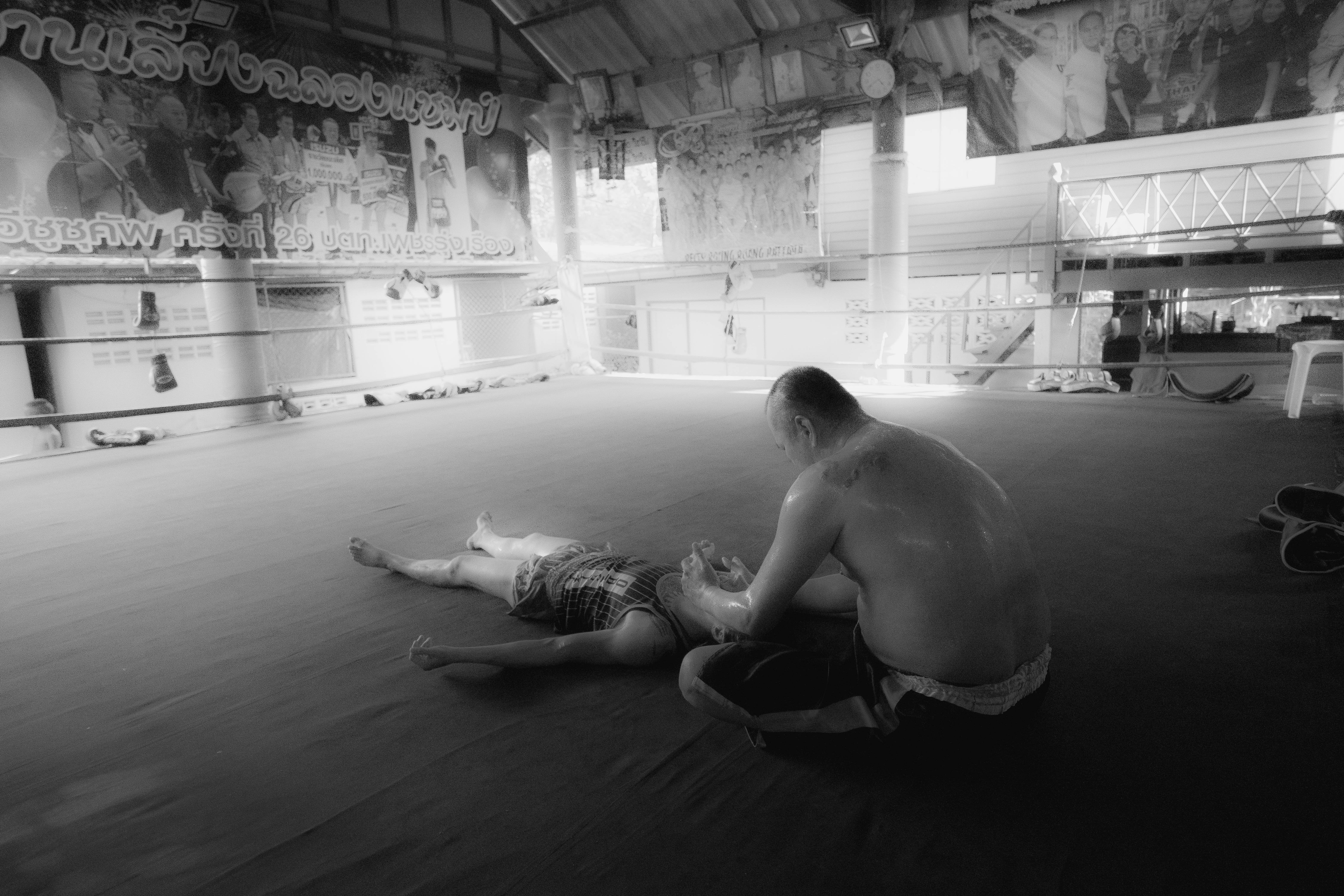
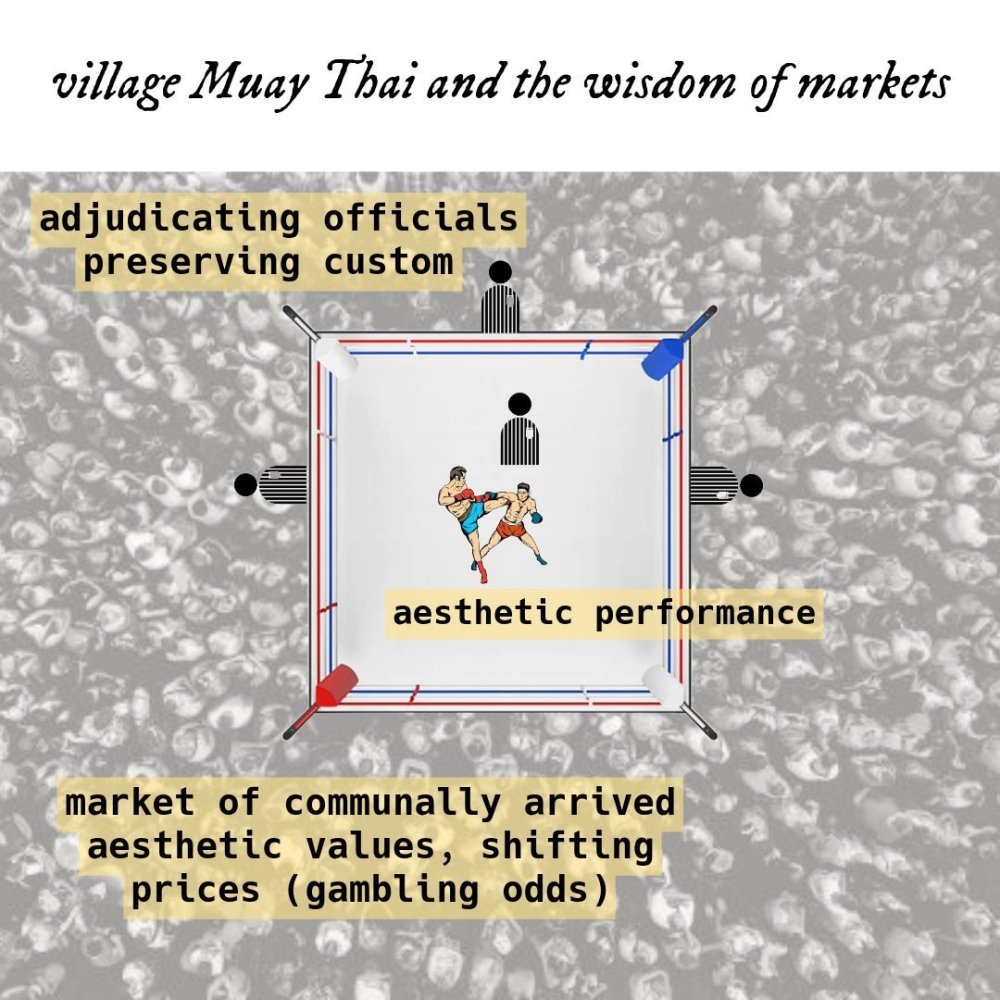
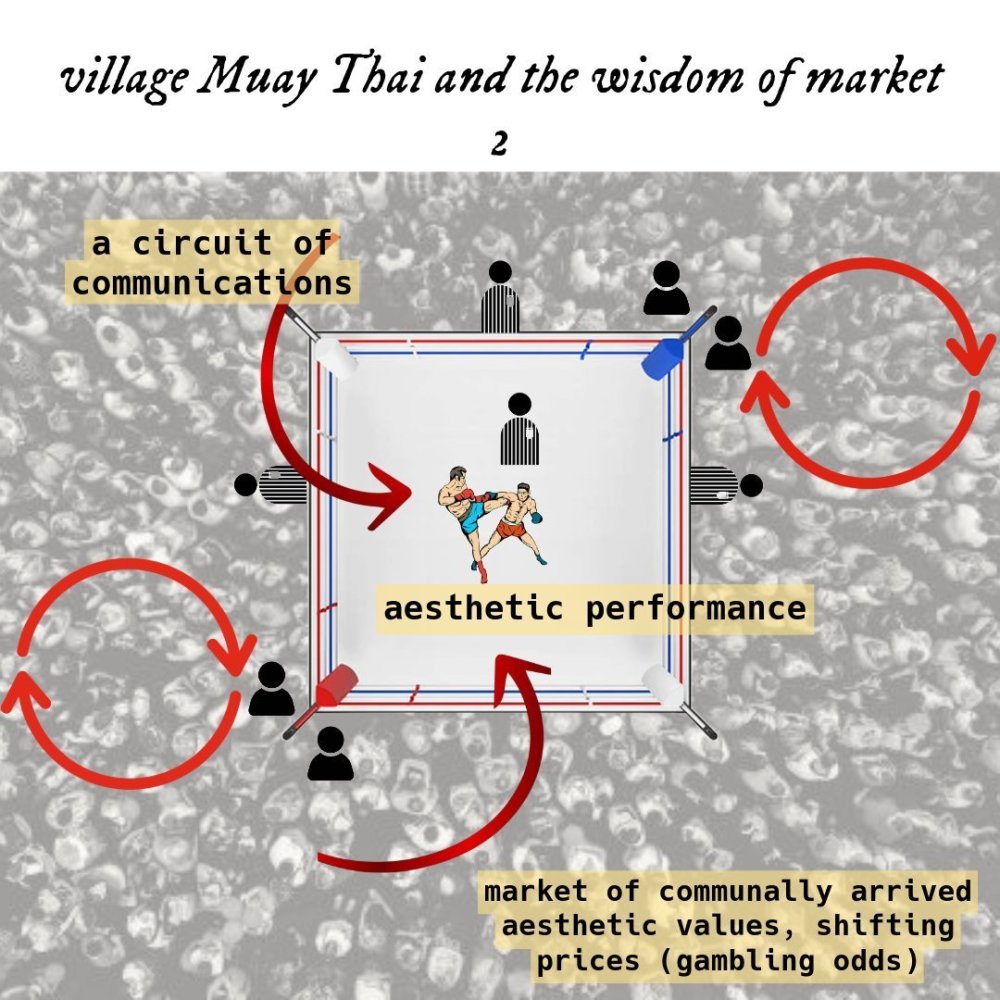
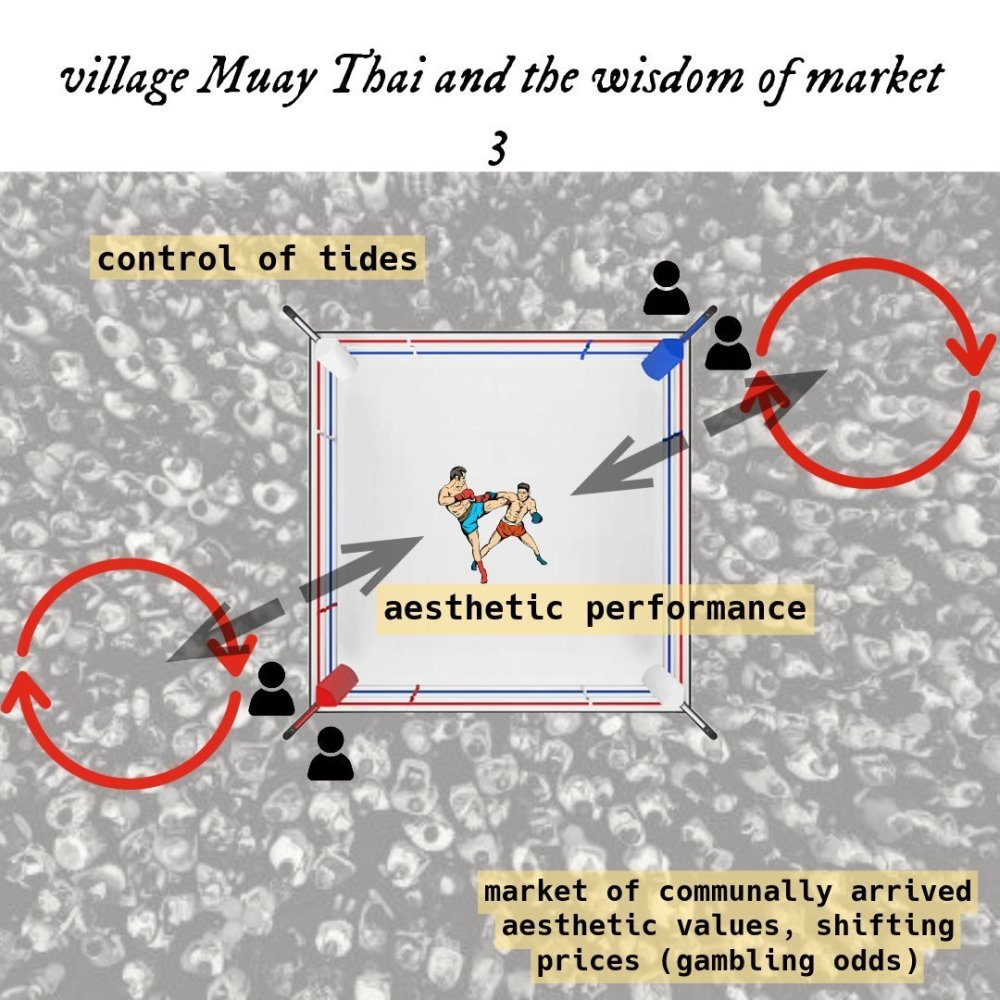
.thumb.png.2da13b71b7ed60a4f91f630f095d85a7.png)
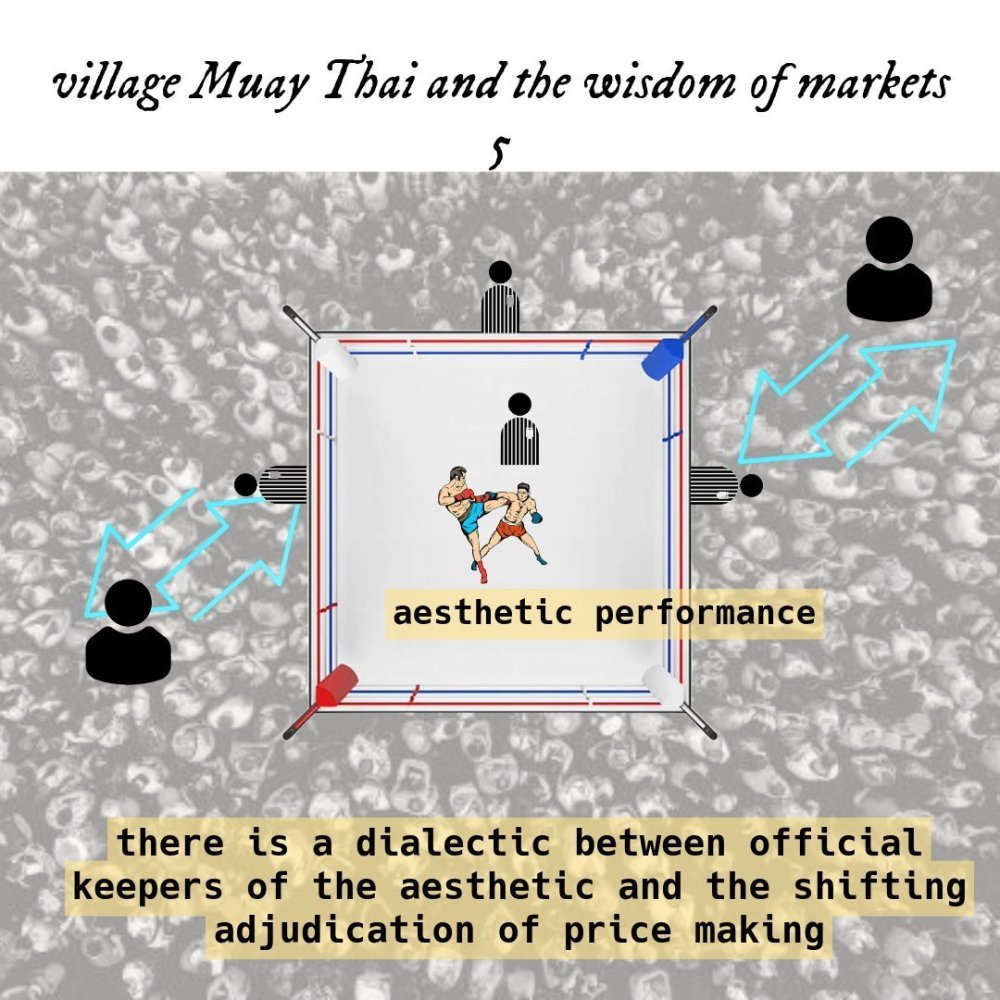
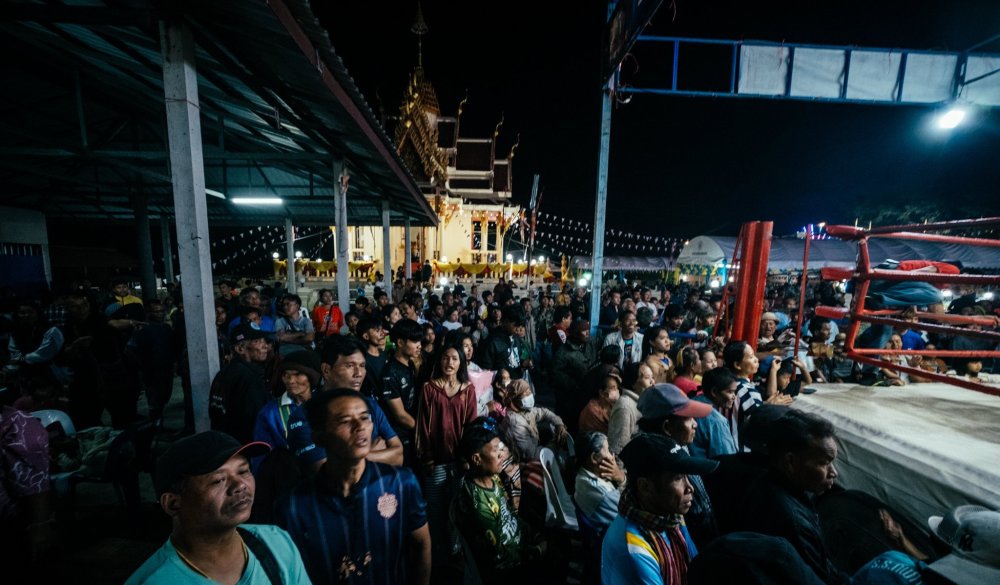
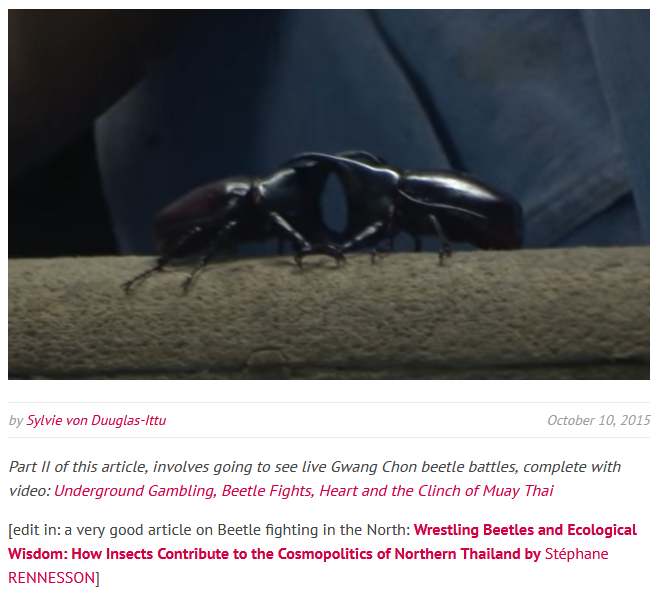
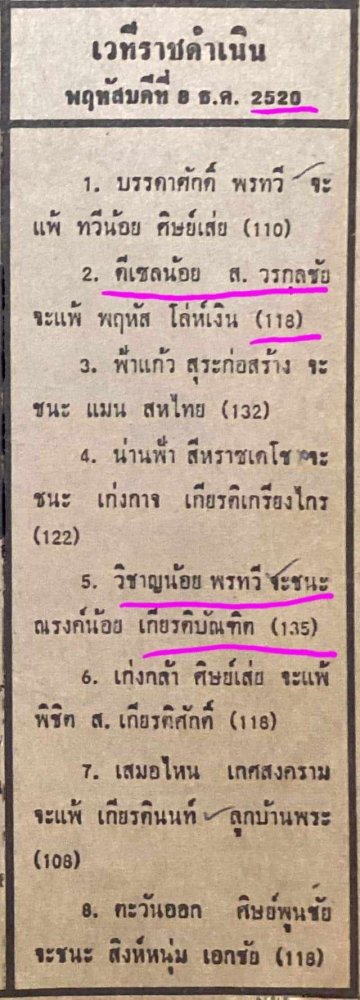
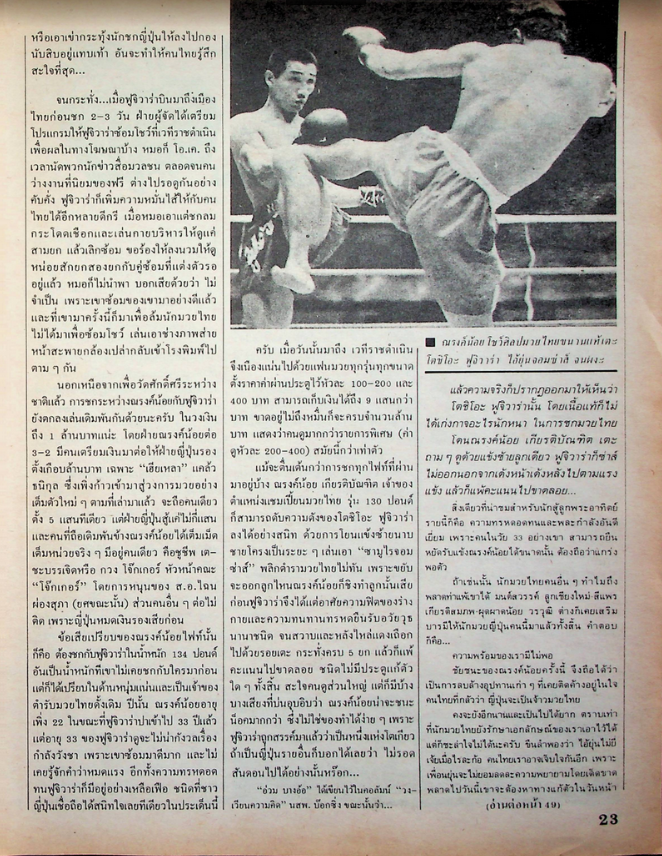
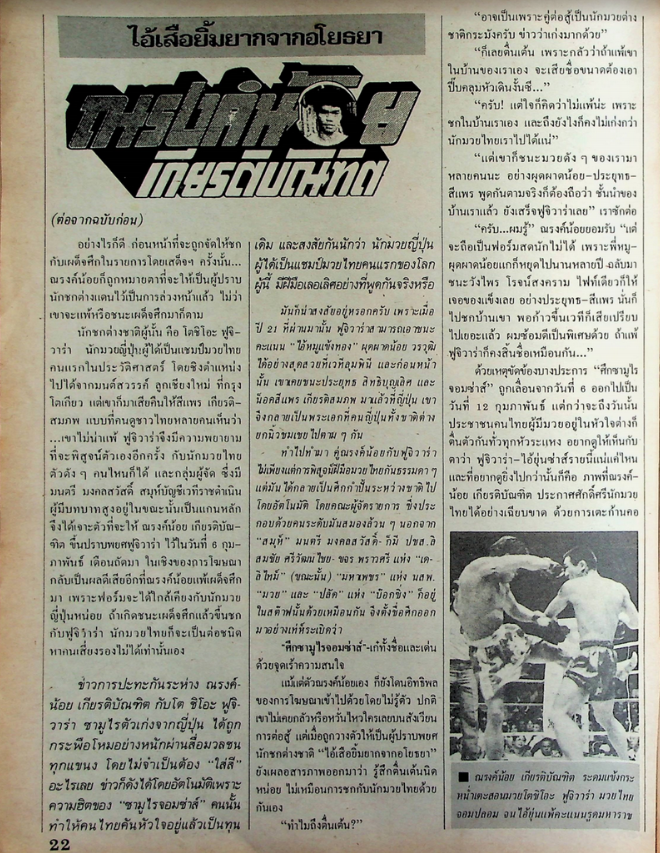
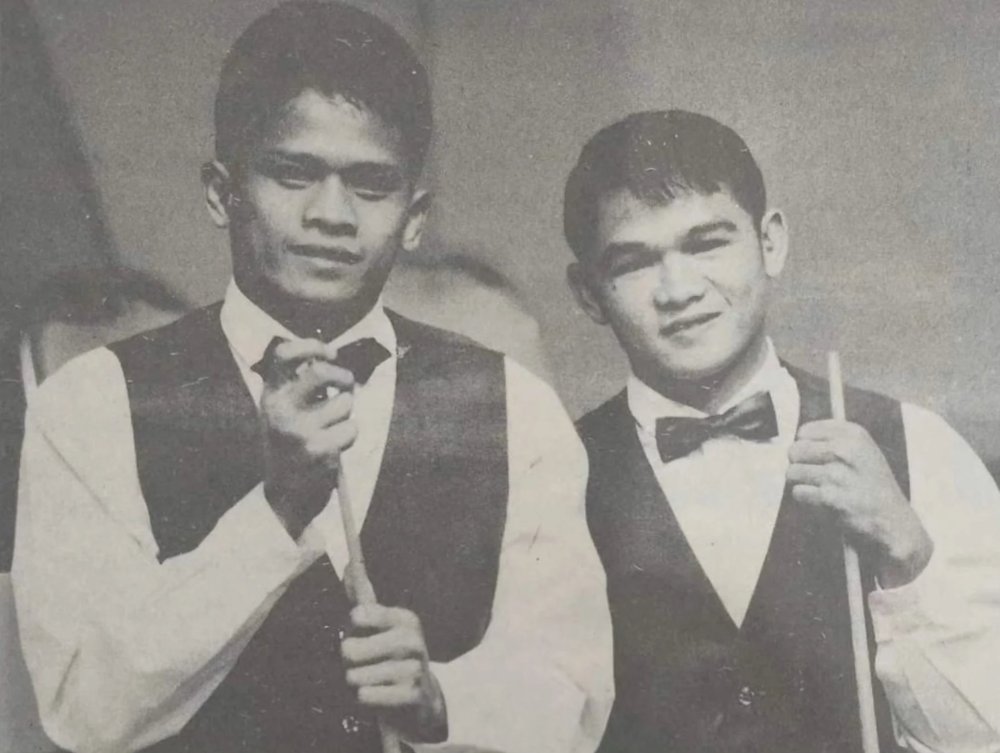
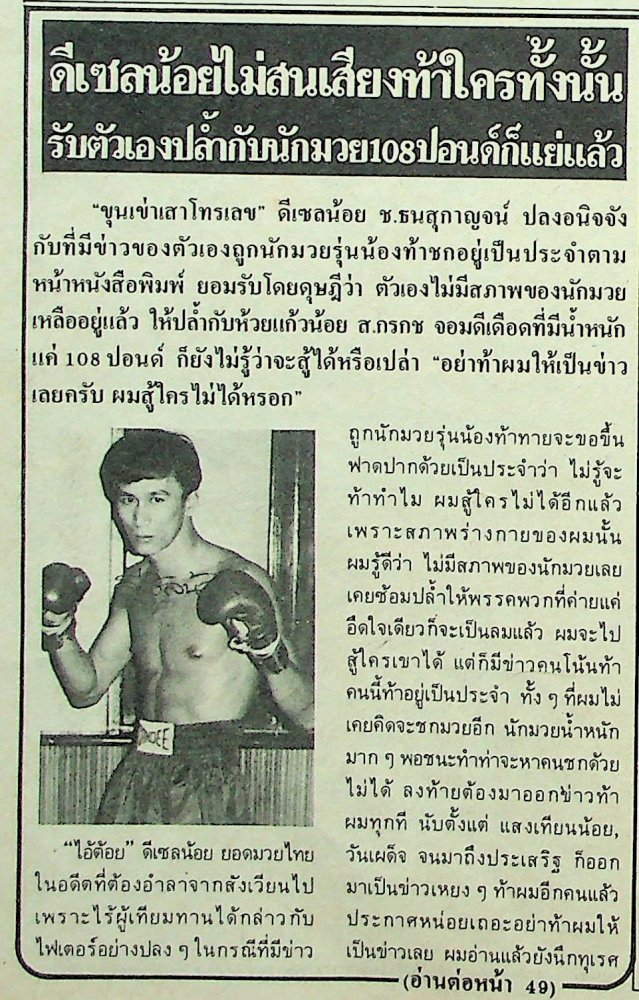
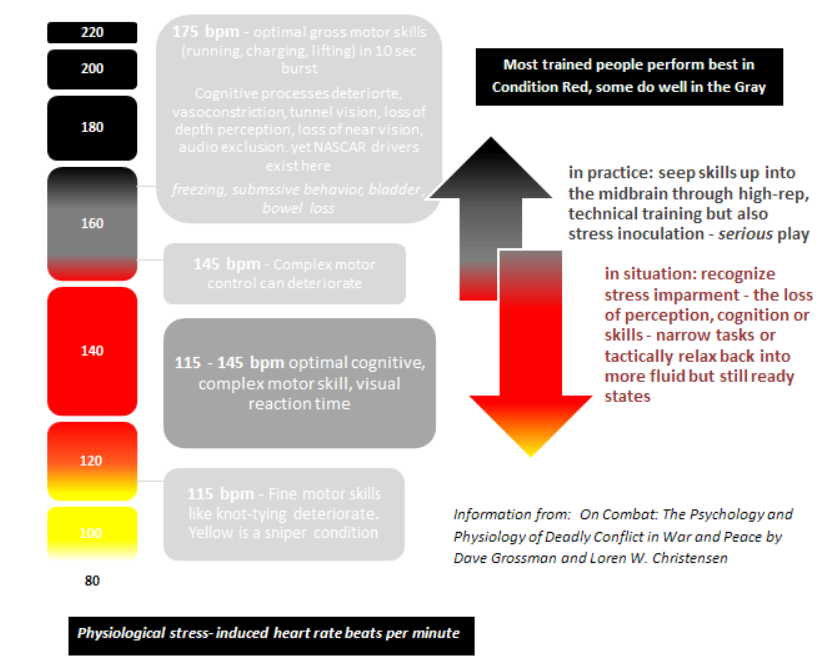
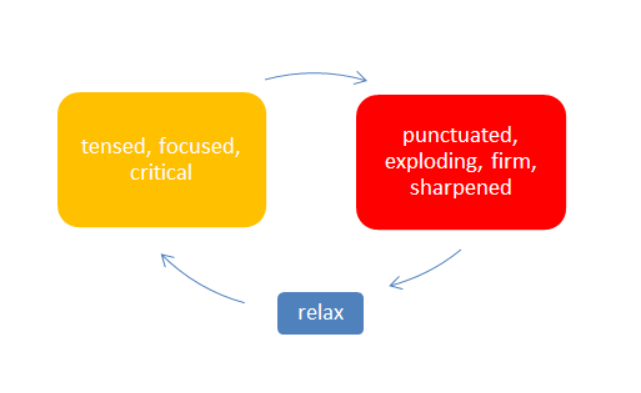
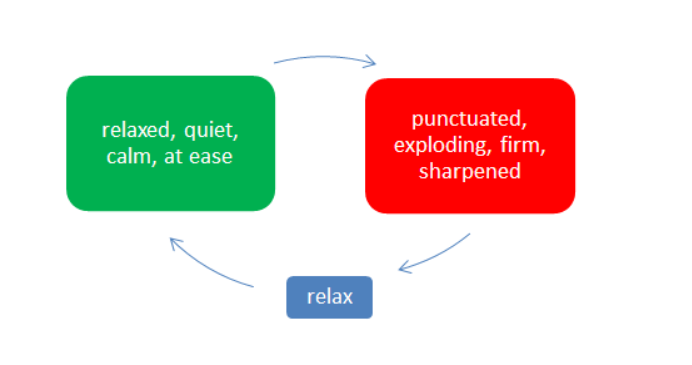
.thumb.jpeg.d8ca65ffa296b608e86ee461cc9f06d6.jpeg)
